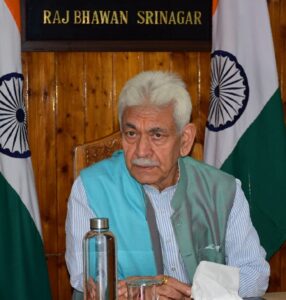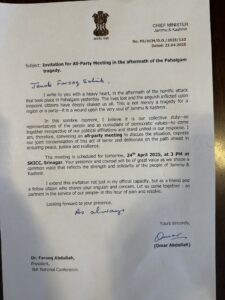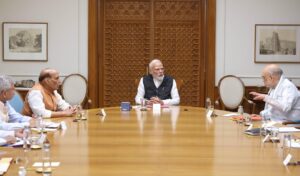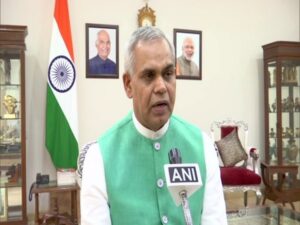Health Ministers to nominate next WHO Regional Director for South-East Asia
New Delhi [India], October 28 (ANI): Health Ministers and senior officials from member countries are meeting in New Delhi next week to deliberate on priority health issues and nominate the next World Health Organisation (WHO) Regional Director for South-East Asia, WHO said.
The 76th Session of the WHO Regional Committee for South-East Asia, the annual governing body meeting of the world body at the regional level, will be held from October 30 to November 3, in the national capital.
WHO Director-General Tedros Adhanom Ghebreyesus and WHO South-East Asia Regional Director Poonam Khetrapal will be present.
Accelerating prevention and control of cardiovascular diseases, ending neglected tropical diseases, and regional health security, are among the key issues to be discussed, the release added.
A ministerial roundtable will be held on strengthening primary health care as a key element towards achieving universal health coverage.
On Wednesday, the Regional Committee will vote to nominate the next WHO Regional Director for South-East Asia.
Two candidates – Bangladesh nominee Saima Wazed and Nepal nominee Shambhu Prasad Acharya are in fray. The nomination will be submitted to the WHO Executive Board which takes place from January 22-27, 2024 in Geneva, Switzerland. The newly appointed Regional Director will assume office on February 1, 2024, for a five-year term, according to a statement.
At the Regional Committee, countries will be felicitated for public health achievements, many of them triggered by the focused approach towards the regional flagship priorities.
Home to more than 2 billion people, the region has made accelerated progress around the regional flagship programmes. Since 2014, the region has eliminated polio and maternal and neonatal tetanus. Four countries- Bhutan, Maldives, Sri Lanka and Timor-Leste have eliminated measles and rubella, one of the eight flagship priorities.
Prioritising the elimination of neglected tropical diseases, four countries – Maldives, Sri Lanka, Thailand, and Bangladesh have eliminated lymphatic filariasis. Nepal and Myanmar eliminated trachoma, and India was verified as yaws-free.
Sri Lanka and Maldives eliminated malaria. Thailand, Maldives and Sri Lanka eliminated mother-to-child transmission of syphilis and HIV. Bangladesh, Bhutan, Nepal and Thailand achieved hepatitis B control.
Focusing on accelerating the reduction of maternal, neonatal and under-5 mortality, the Region recorded a 68.5 per cent reduction in maternal mortality between 2000 and 2020, and 45 per cent reduction in under-5 mortality and a 39 per cent reduction in neonatal mortality during the period, it added.
Five countries- DPR Korea, Indonesia, Maldives, Sri Lanka and Thailand have achieved 2030 SDG targets of reducing under-5 mortality and neonatal mortality.
The Region witnessed the fastest decline in tobacco use between 2000 and 2020 with smoking among men declining from 50 per cent to 20 per cent; and among women declining from 8.9 per cent to 1.6 per cent. Countries in the Region have been leading in the implementation of graphic warnings on tobacco, the release added.
Prone to health emergencies, the Region has been investing in strengthening preparedness and response capacities since the 2004 Indian Ocean tsunami that hit multiple countries in the Region and killed over 200,000 people.
Strengthening health emergency capacities has also been a regional flagship since 2014. Countries have been enhancing the International Health Regulation (2005) core capacities. The lessons from the COVID-19 pandemic are now guiding the Regional Strategy Roadmap on Health Security and Health System Resilience for Emergencies 2023-2027.
The region is accelerating control of cardiovascular diseases with a target to place 100 million people with hypertension and/or diabetes on protocol-based management by 2025.
Committed to accelerating universal health coverage, with a focus on human resources for health and essential medicines, the availability of doctors, nurses and midwives has increased by over 30.6 per cent since 2014. Countries in the Region have been taking several initiatives to make universal health coverage a reality, the WHO release said.






